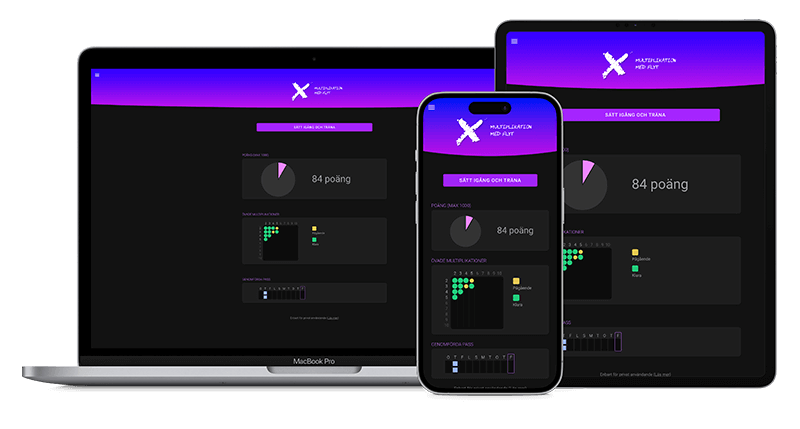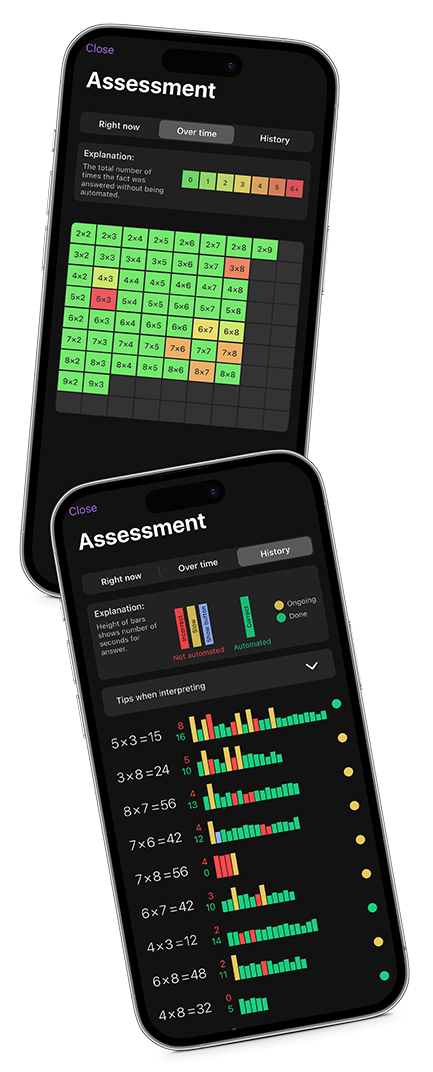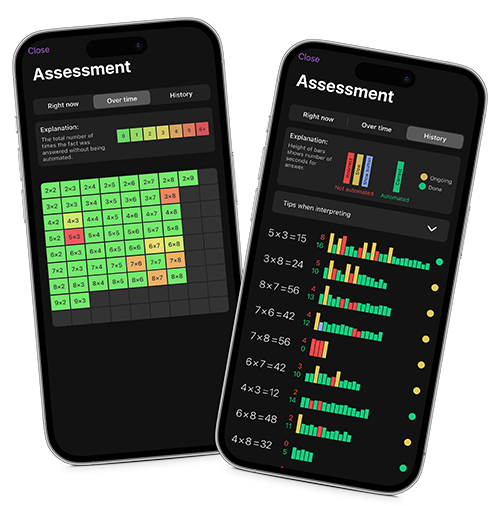A Method in Line with the Times
Building fluency with basic multiplication facts starts in early elementary school with number sense, understanding, and strategy development. There are no shortcuts to fluency: it requires practice using a variety of methods, activities, games, and tools over a long time. Using cognitive effort is initially a good thing as brain bonds are developed and strategies are formed, challenged, and reformed. The more students think, the more they learn.
With repeated practice, students naturally become fluent at applying strategies and can do less thinking. They eventually move on to automaticity, which means answering without conscious thinking, as they either become very efficient at strategies or can pull facts from memory. This happens progressively and requires a lot of varied practice over time.
Automaticity in basic facts reduces cognitive load, freeing up resources for concepts like division, fractions, algebra, multi-step calculations, etc. The benefits affect almost all aspects of mathematics in later years.
Achieving automaticity from memory for all facts is difficult for many students. However, most can either become automatic with strategy or at least more efficient. Regardless, students should be allowed the opportunity to individually reach as far as possible towards automaticity, given its importance for future studies, according to research.
Practicing specifically for automaticity after having achieved fluency is not the same as rote memorization without understanding. Far from it. Trying to move facts to automaticity at this stage builds on students' own strategies and memory networks, which is a very different thing. It does not take away the importance of understanding and flexibility.
Students should only practice specifically for automaticity when they have a strong foundation of fluency:
• As preparation for upper grades, at the end of building fluency.
• When upper-grade teachers discover that their students are not automatic enough with their facts.
• As a yearly refresher and review of multiplication facts to improve retention and automaticity.
With a fast-paced curriculum, time is limited. While it's certainly possible to practice automaticity using manual methods (e.g., flashcards), managing both individual practice with feedback and repetition of the right facts at the right time can be challenging, especially for an entire class. Fortunately, this is where digital tools excel.
Fluent Math is an automatic method to practice multiplication automaticity without stress. Teachers can, for free and in an easy way, get the entire class to practice for 5 focused minutes every morning (and preferably afternoon). The entire multiplication table is reviewed, and each student practice individually at their own pace. Fluent Math automatically handles practice, repetition, spacing, and progress.
For kids, teenagers, and adults who need to review the multiplication tables, identify the facts they struggle with, and achieve automaticity.
 Use Fluent Math on any device (Chromebook, iOS, Android, tablets, computers, etc.)
Use Fluent Math on any device (Chromebook, iOS, Android, tablets, computers, etc.)



